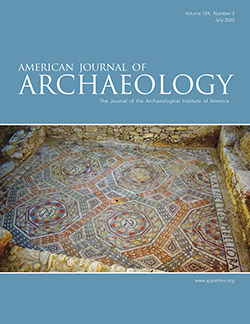AJA Open Access
July 2020 (124.3)
Museum Review
Exhibiting Ancient Africa at the Museum of Fine Arts, Boston: “Ancient Nubia Now” and Its Audiences
The Museum of Fine Arts in Boston holds the finest collections of antiquities from ancient Nubia outside Egypt and Sudan, but the museum has only rarely displayed this material since its excavation by George Reisner in the early 20th century. The exhibition “Ancient Nubia Now” (2019–2020) was a visually spectacular display that was in one sense a fairly traditional introduction to the history and visual cultures of Nubia. The survey began with the kingdom of Kerma (2400–1500 BCE), extended through the Egyptian occupation of the New Kingdom (1550–1070 BCE), and into the Napatan and Meroitic periods of the empire of Kush (750 BCE–364 CE). The exhibition was also innovative, however, in its inclusion of a range of community voices and mild criticism of the museum itself. Noncuratorial voices included members of the Nubian diaspora and African-American scholars. The museum’s self-criticism acknowledged the colonial history of the collection itself, Reisner’s history of racist interpretations of the archaeological record, and the museum’s responsibilities as stewards of the collection. This review walks readers through the exhibit in its multiple voices and highlights as well some of the absences in its presentation.
